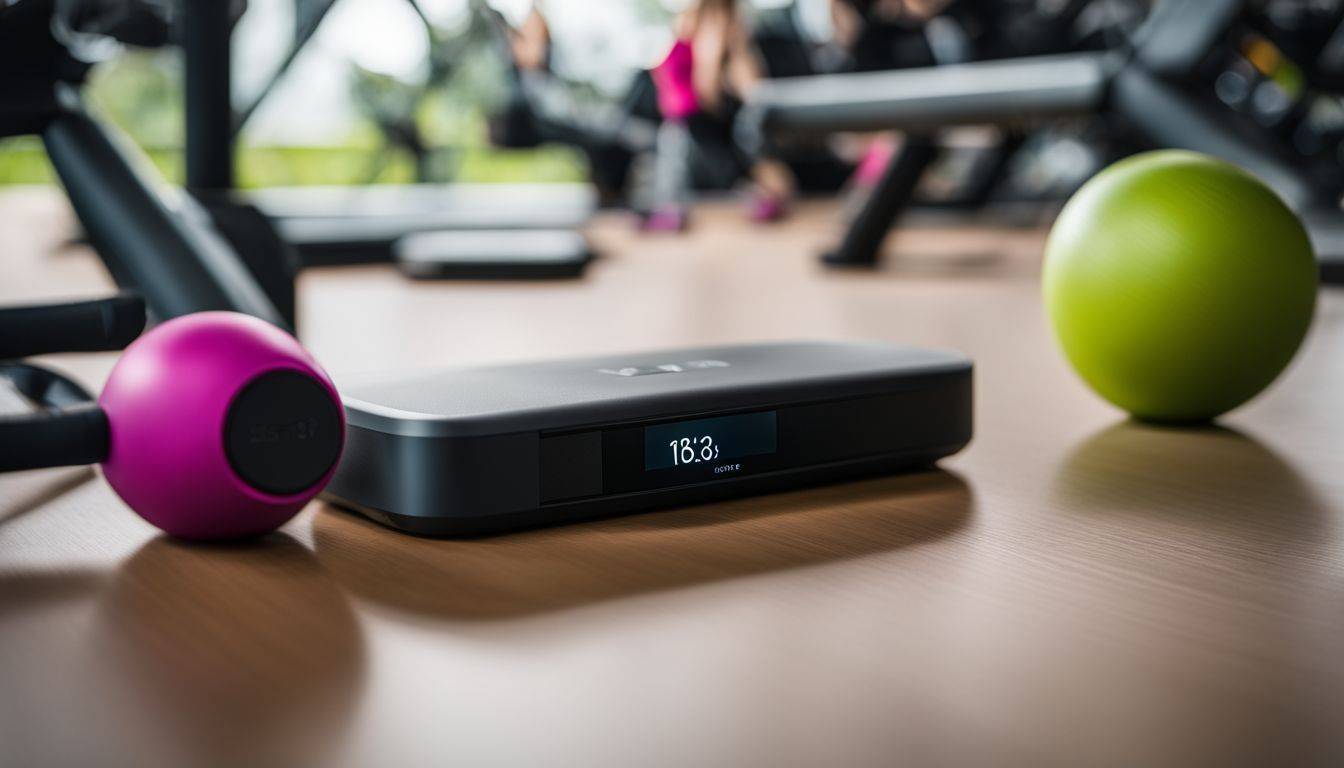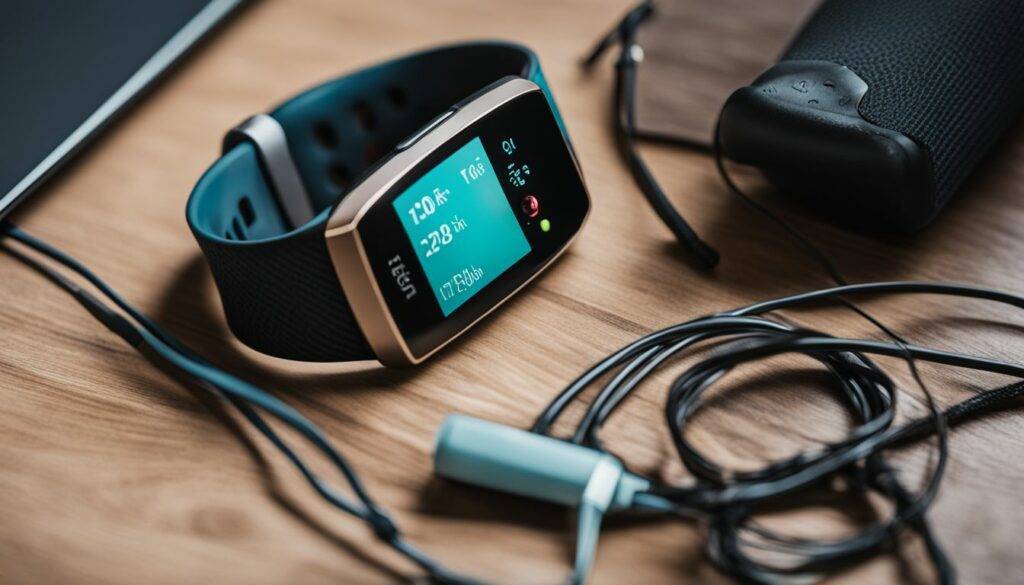Many of us rely on our Fitbit to guide our fitness journey, but we often wonder just how it calculates the calories we’ve burned. Fitbit’s blend of technology tracks a range of factors, like heart rate and daily steps, to estimate energy expenditure.
This article will unveil the science behind your wearable companion, ensuring you’re equipped with knowledge to better understand your progress.
Understanding Fitbit Calorie Burn Calculation

Diving into the mechanics behind your Fitbit, we uncover a sophisticated system that tracks every heartbeat and step to estimate the total calories you’ve torched. The device doesn’t just count steps; it deciphers the data from your daily grind to give you insights on your energy expenditure, translating movement and biology into numbers.
Heart Rate Monitors
Heart rate monitors in Fitbit devices play a key role in tracking how many calories you burn. Your heart rate gives clues about the intensity of your activity. The faster your heart pumps, the more calories you are likely to use.
Fitbits use your pulse to estimate calorie burn during workouts and even when at rest.
Every beat of your heart sends blood through your veins and arteries. This constant blood flow relates directly to calorie burning. As you exercise—whether it’s cardio, weight-lifting or any other workout—the device keeps an eye on these changes.
It calculates how hard your lungs and muscles work together by measuring heartbeats per minute (BPM). This information helps Fitbit give a snapshot of the energy you expend throughout the day.
Basal Metabolic Rate (BMR)
Your body needs energy to function, even when you’re resting. Basal metabolic rate, or BMR, is the number of calories your body burns at rest. It’s like the amount of fuel your engine idles at without driving.
Fitbit uses your BMR to guess how many calories you burn each day just by being alive.
Fitbit combines this BMR with how much you move to estimate total calories burned. It gets personal for accuracy! The tracker adjusts as your weight changes—especially if synced with a Fitbit Aria scale—to keep your calorie count right on target.
This helps in better weight management and fitness planning.
Activity Data
Fitbit trackers are smart—they gather data from your movements. They monitor steps, distance, and floors climbed. Some Fitbits also track specific workouts like running or yoga. But what happens when you bike or lift weights? These activities don’t rely on steps.
The tracker needs your help then. You must log these exercises manually. This ensures that the Fitbit counts every calorie burned during such activities accurately. It uses your heart rate to add up calories torched during non-step workouts too.
Remember to wear your fitbit correctly for the best heart rate readings.
Your daily moves contribute to the total calorie burn count alongside BMR calculations. Whether walking, dancing, or doing chores—it all adds up in the Fitbit app on Android or Windows 10 devices! Keep moving and keep tracking; every bit helps with weight loss goals.
Factors Affecting Fitbit’s Calorie Burn Accuracy

Despite Fitbit’s sophisticated algorithms, various factors play pivotal roles in the precision of calorie burn figures. From hardware variances among devices to the personal details entered by users—each element can significantly sway the accuracy of your fitness tracker’s calculations.
Model Differences
Fitbit offers a range of models, and each one tracks calories burned a bit differently. The more you pay for a Fitbit, the more accurate its calorie count may be.
- Luxury Models: Devices like the Fitbit Charge or Sense have advanced sensors. They can measure things like skin temperature and blood oxygen levels.
- Heart Rate Monitors: All Fitbits with heart rate monitors use your pulse to better estimate calorie burn. The accuracy of this feature can vary between models.
- Older vs. Newer: Typically, newer Fitbits have updated technology for more precise tracking. An older model like the original Flex may not track as well as the latest Versa.
- Budget Options: A Fitbit Inspire 2 might cost less but it also might not track calories burned as accurately as higher-end models.
- Software Updates: Sometimes, updating your device’s software improves its calorie calculation accuracy.
- Personal Data Entry: Entering correct personal information ensures better tracking. Different models may prompt for varying levels of detail.
User Information Accuracy
Your Fitbit uses personal details like height, weight, age, and gender to calculate calories burned. If this information is wrong, your calorie count may be off too. Make sure you enter your details correctly for a more accurate burn estimate.
Regularly updating these facts in your app can keep the numbers right as you lose or gain weight.
Heart rate data also plays a big role in how many calories your device says you’ve burned. Wear your Fitbit on the correct part of your wrist and make sure it’s snug but not too tight.
This helps it read your heart rate better and track those calories more accurately.
Is Fitbit’s Calorie Burn Count Accurate?
The question of Fitbit’s calorie burn accuracy ignites much debate among fitness enthusiasts and experts alike—does this popular gadget really hit the mark on measuring our daily energy expenditure? Delving into user experiences and comparing empirical data, we uncover the truth behind those numbers flashing on your wrist.
Comparing with Other Methods
Understanding how Fitbit calculates calorie burn provides insight, but comparing it to other methods clarifies its precision. Let’s delve into the comparison with an easily digestible HTML table layout.
| Method | Primary Measurement | Accuracy | Fitbit Relevance |
|---|---|---|---|
| Direct Calorimetry | Heat production | Highly accurate | Impractical for everyday use |
| Indirect Calorimetry | Oxygen consumption | High accuracy | Not readily available for consumers |
| Metabolic Equivalent (METs) | Specific activity value | General estimates only | Used in baseline Fitbit calculations |
| Online Calorie Calculators | User input data | Varies widely | Less personalized than Fitbit |
| Lab-Based Assessments | Comprehensive biometric analysis | Extremely precise | Costly and not accessible for daily tracking |
Fitbit’s method leverages heart rate and activity data, aiming for a balance between convenience and accuracy. Remember, models like Fitbit Inspire 2 may lag in precision compared to the higher-end Charge or Sense models. Discrepancies exist; for instance, a study points out the Fitbit Charge 2’s tendency to underestimate calories burned while running by 4 percent. Bringing this table to life, individuals can weigh the trade-offs between Fitbit’s accessible tracking and the meticulous nature of scientific methodologies.
User Feedback and Studies
People who use Fitbit often talk about the differences they see in how many calories they burn. Some find that their trackers don’t match up with other ways of counting calories. But when we look at user feedback and studies, we learn that Fitbits are usually close to right—they get within a few percentage points most of the time.
Different models of Fitbit can give different calorie counts. The newer, pricier options tend to be more spot-on than the older ones. This is what users say and what research shows.
Keep this in mind if you’re deciding which fitness tracker to buy for keeping track of your burned calories.
Improving Fitbit Calorie Burn Count’s Accuracy
Ensuring the precision of your Fitbit’s calorie burn count goes beyond initial setup; it requires ongoing attention to detail and a commitment to accuracy. Dive into some key adjustments you can make that are not only simple but also highly effective in enhancing the reliability of your fitness tracker’s data.
Regularly Update User Information
Keep your Fitbit in the know by refreshing your stats often. Punch in any changes to weight or age into your Fitbit profile. This helps it calculate calories burned more precisely.
Your Basal Metabolic Rate (BMR) shifts when you gain or lose pounds, so accuracy stays on point with updated info.
Your heart works differently from others and affects calorie burn too. Let Fitbit track how hard it beats during workouts and rest. Make sure all details about yourself are current to get a personal calorie count that’s just for you.
As you change, so should what your Fitbit knows about you – stay ahead of the game by keeping everything fresh!
Correct Use of Heart Rate Features
Updating your user information can greatly improve the accuracy of calorie counts. Now, let’s focus on getting the most out of your Fitbit’s heart rate features. Wear your Fitbit snugly above your wrist bone for the best heart rate signal during workouts and throughout the day.
Make sure it’s not too tight or too loose. This will ensure that the sensor accurately tracks your pulse.
For accurate readings, keep the back of your Fitbit clean from any debris or sweat after exercise sessions. Check that you have set the device to track heart rate continuously in settings for a comprehensive view of your daily calorie burn.
Using these tips helps Fitbit use your real-time heart rate to estimate calories burned more precisely.
Common Questions about Fitbit’s Calorie Burn Calculation
Navigating through the myriad of features in fitness trackers can often lead to some head-scratching, especially when it comes to understanding how devices like Fitbit calculate calories burned.
Let’s dive into some frequently asked questions that surface as users aim to make sense of the numbers flashing on their screens, and get a clearer picture of just what those calorie burn figures are telling us.
Misinterpretation of Results
People sometimes think their Fitbit shows the exact calories they burned. This isn’t always true. Fitbits give a close guess, but they can’t be perfect. They use your heart rate and what you tell them about yourself to figure out your burn.
If this info is off, so will your calorie count.
Your tracker’s model also plays a part in how accurate the results are. Newer, pricier Fitbits often have better accuracy than older or cheaper versions. Remember, any fitness tracker has limits on how well it can measure calorie burn.
It’s important not just to look at the numbers but also to listen to your body and see how you feel after exercise.
Variations in Calculation for Different Exercises
Misinterpretation of results often comes from not understanding how Fitbit adjusts calculations for different activities. Your body uses energy differently depending on the exercise you’re doing.
Fitbit takes this into account to estimate your calories burned. For example, cycling affects your heart rate and calorie burn differently than running or swimming.
Fitbit’s algorithms are designed to recognize various exercise patterns and intensities. They use your personal data like weight and age along with your motion and heart rate during the activity.
This helps determine whether you’re lifting weights or taking a yoga class. Each activity burns calories in its own way, so Fitbit changes its calculations for each one. Remembering this can help explain why two different workouts might show different calorie counts even if they felt equally hard.
Conclusion
Your Fitbit is a smart tool for tracking your fitness journey. It uses your personal info and heartbeats to guess how many calories you burn each day. Remember, steps aren’t the only thing it counts; it watches over all kinds of activities.
Keeping your details up-to-date makes sure you get the best results. Trust your Fitbit to help you track progress, but also listen to what your body says.
